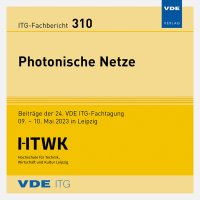Modelling Spectral Hole Burning of EDFA Assuming a Small Number of Distinct Groups of Erbium Ions
Conference: Photonische Netze - 24. ITG-Fachtagung
05/09/2023 - 05/10/2023 at Berlin
Proceedings: ITG-Fb. 310: Photonische Netze
Pages: 8Language: englishTyp: PDF
Authors:
Rittner, Inga L.; Krummrich, Peter M. (Chair for High Frequency Technology, Technische Universität Dortmund, Germany)
Abstract:
We propose a modelling approach for inhomogeneous broadening characteristics i.e. spectral hole burning based on site-selective excitation. A small number of distinct erbium ion sites within the glass host is assumed. All erbium ions within a group occupying the same site are characterized by a pair of absorption and emission cross section spectra. These cross section spectra are derived from scaled emission and absorption spectra used for the classic rate equation model, which assumes the same thus homogeneous broadening characteristics for all erbium ions i.e. one group only. The scaled cross section spectra for this classic model are based on a superposition of several contributions with Gaussian shape. Subsets of these contributions are selected to construct the broadband cross section spectra of the distinct erbium ion groups in our model. The parameters of the cross section spectra of the individual erbium ion groups are adapted in a two-step procedure with the aid of measurement results. Our model with inhomogeneous broadening characteristics is fitted for a saturating channel at 1545 nm. The model is applied for a channel load with a high power channel at about 1544.1 nm. The results show decent agreement between numerically and experimentally determined gain spectra.


